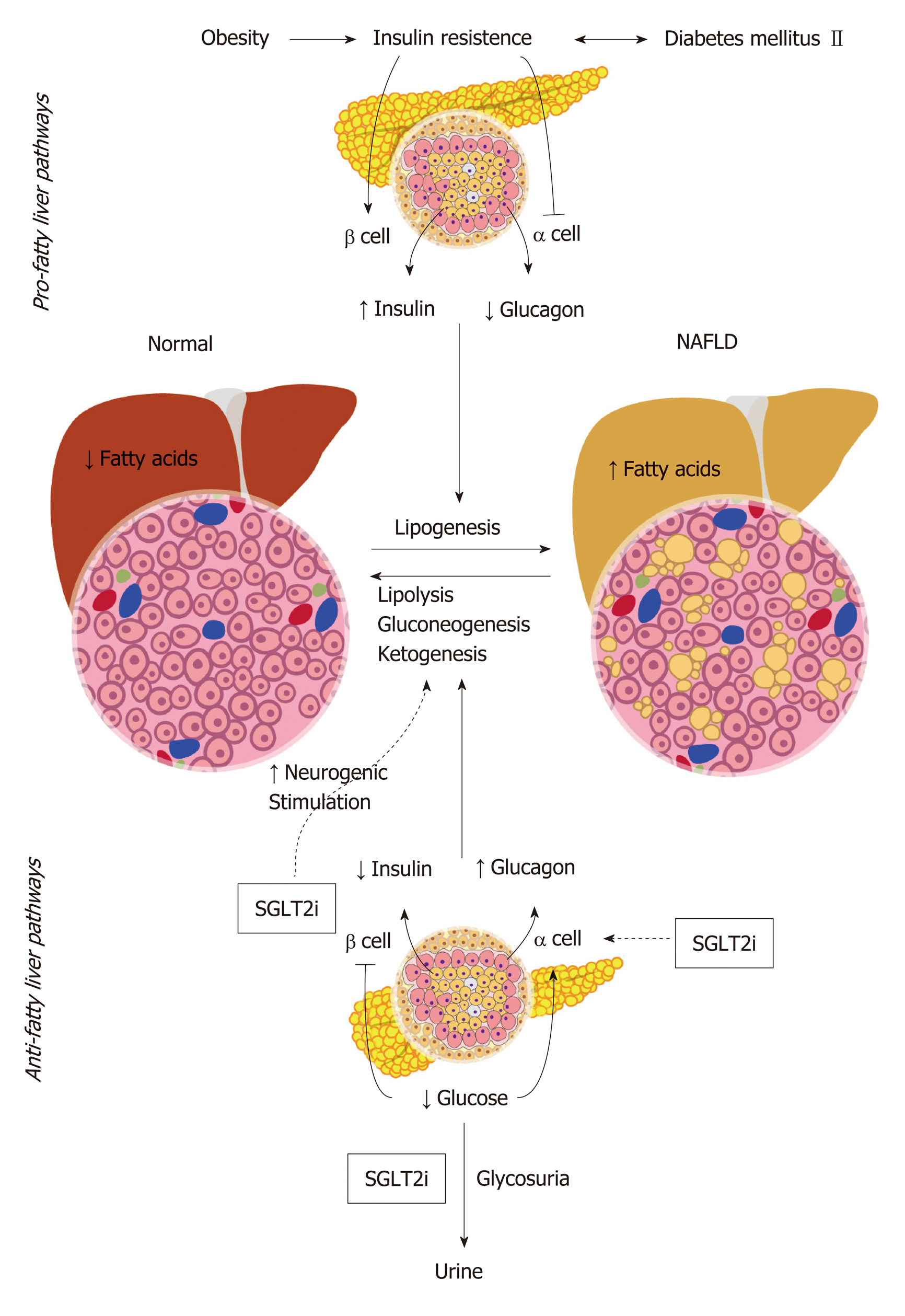Copyright
©The Author(s) 2019.
World J Hepatol. Jul 27, 2019; 11(7): 562-573
Published online Jul 27, 2019. doi: 10.4254/wjh.v11.i7.562
Published online Jul 27, 2019. doi: 10.4254/wjh.v11.i7.562
Figure 1 Mechanism of action of Sodium-glucose co-transporter-2 inhibitors in non-alcoholic fatty liver disease.
Obesity-induced insulin resistance leading to diabetes are the major risk factors for non-alcoholic fatty liver disease (NAFLD). The increase in insulin secretion and inhibition of glucagon secretion by the islet cells in the pancreas ultimately leads to the stimulation of lipogenesis, ultimately shifting the balance towards hepatic steatosis and NAFLD. Sodium-glucose co-transporter inhibitors primary effect is inducing glycosuria causing lowering of the blood glucose levels. This inhibits the secretion of insulin and stimulates glucagon secretion, causing a higher insulin-to-glucagon ratio, which increases the lipolytic, gluconeogenetic, and ketogenetic pathways. This results in reduction in the hepatic steatosis in NAFLD.
- Citation: Dokmak A, Almeqdadi M, Trivedi H, Krishnan S. Rise of sodium-glucose cotransporter 2 inhibitors in the management of nonalcoholic fatty liver disease. World J Hepatol 2019; 11(7): 562-573
- URL: https://www.wjgnet.com/1948-5182/full/v11/i7/562.htm
- DOI: https://dx.doi.org/10.4254/wjh.v11.i7.562









